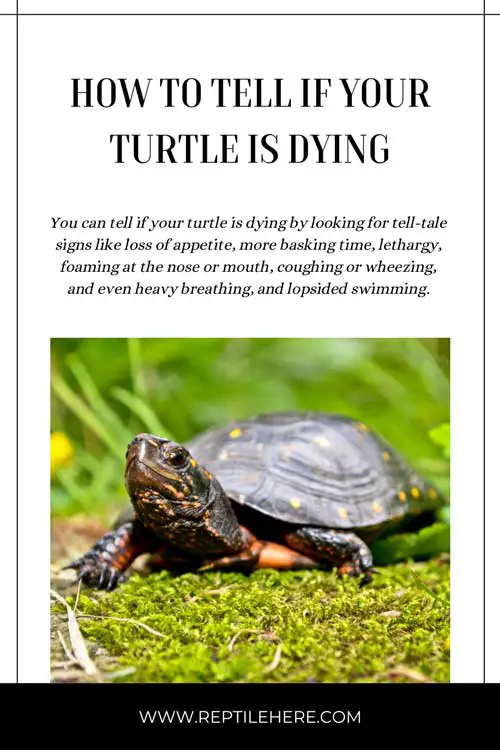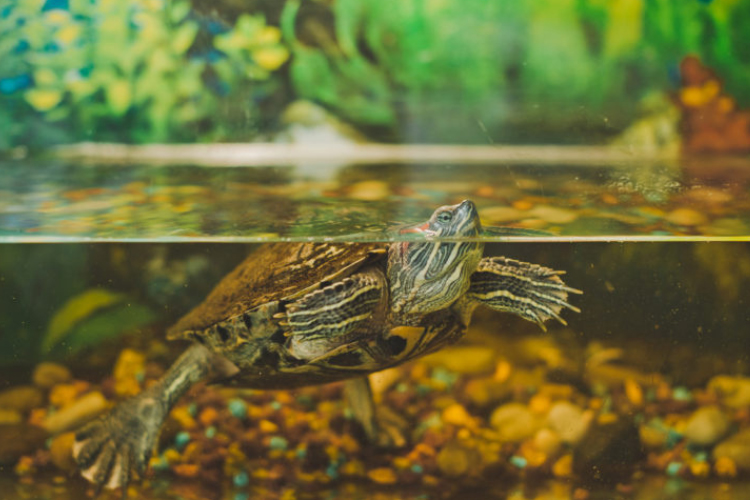How To Tell If Your Turtle Is Dying? The MOST Important Signs To Look For
As a turtle owner, you want to keep your little friend happy and healthy at all times. You should be able to tell if your turtle has an underlying condition or is showing signs of sickness. This will help you take action on time to save your little friend.
So, how to tell if your turtle is dying? You can tell if your turtle is dying by looking for tell-tale signs like loss of appetite, more basking time, lethargy, foaming at the nose or mouth, coughing or wheezing, and even heavy breathing, and lopsided swimming. Bad odor coming from its shell or surrounding water can also be a sign of a dying turtle.
This article digs through more intricate details of knowing when your turtle is dying. You’ll also discover important information like how to save a dying turtle, how to tell dying from brumation, what to do with your turtle if it dies, and so much more.
How to tell if your turtle is dying?
Contents
As we’ve just mentioned above, the best way to tell if your turtle is dying is to look out for various surefire signs associated with an underlying condition and death.
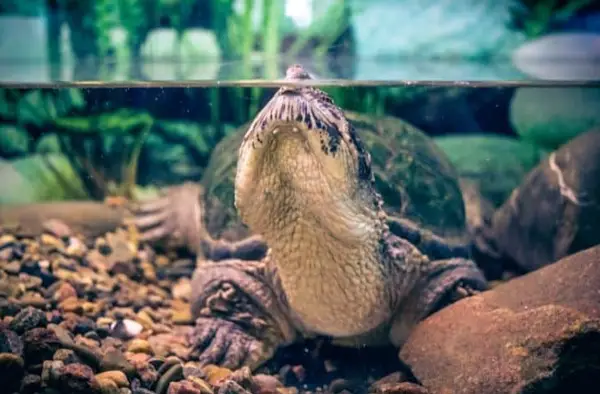
Let’s discuss these common signs of a dying turtle:
Your turtle is basking for longer periods of time
If you have noticed your little pet spending more time basking, then it could be a sign that she has an underlying condition.
Turtles tend to spend more time basking when they’re sick. This helps increase their body temperature and trigger a fever in their body for fighting off whatever is ailing them.
Note that it is not possible to tell what specific illnesses are affecting your turtle, so you may want to look for more symptoms and consult a qualified vet for professional care.
However, keep in mind that prolonged periods of basking may not always point out a sick turtle. It could just be that the water feels too cold or something in the water irritates your healthy turtle…or they’ve simply grown fond of basking.
Moreover, different turtle species have varying personalities—some like basking more than others.
Check for foaming at its mouth or nose
You may notice a discharge coming out of your turtle’s nose or mouth when it’s basking. This is another sign that something is wrong with your pet.
This mucus discharge is usually clear and slightly viscous. And tends to turn frothy or look like foam when your little friend is breathing in and out.
If your turtle is foaming and at the same time displaying additional symptoms like increased basking time, then it could be suffering from a respiratory infection.
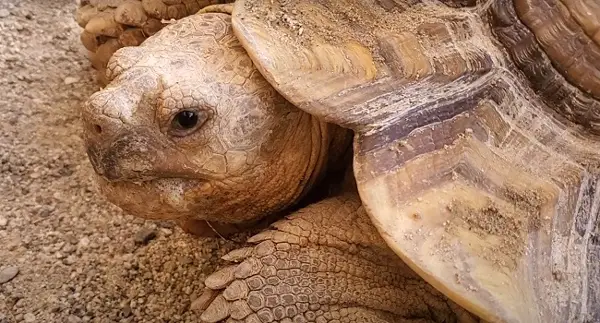
Bad news: Respiratory infections, if not treated on time, will cause your turtle to die! Even worse, there exist no home remedies for fighting this infection, though you may try increasing water temperature to help trigger your pet’s immune system.
The BEST advice is to get the attention of a veterinary professional who will then prescribe antibiotics to your pet to help fight the infection and help keep the turtle from succumbing.
Your turtle is eating less or not eating anything at all
Lack of appetite is another sign that your turtle is dying. Your turtle has changed its eating habits by eating less or nothing at all can be a sign of various underlying conditions.
Thus, you might want to look for additional symptoms that may be causing your turtle to lose its appetite, e.g. lesions, open wounds, and other changes in your pet’s usual behavior.
The good thing is that most turtles may recover with veterinary assistance. Your vet will most likely administer antibiotics or other medical attention.
TIP: Gravid females that are about to lay eggs often show noticeable behavior changes such as loss of appetite, so you may want to consider this if you’re dealing with a female turtle. But this might not always be the case, so checking additional symptoms is key.
Your turtle starts acting lethargic
Turtles are beautiful and fun pets, that have a lot of energy and enthusiasm. Thus, if they suddenly start getting lethargic, it is a surefire sign that something is off with them.
So, how does your turtle act lethargic? It may seem lifeless, not basking as often as before, becomes less inclined to swim toward you to get beg for some food, sleeping for the most part of the day, and significantly decreased mobility.
NOTE that lethargy is a severe symptom showing a serious illness for your pet and you must quickly. Increase the temperature to about 85 degrees Fahrenheit until you get to a vet as a good start for saving your pet.
Being lethargic may also be a sign of a gravid female. But then again, if your female turtle is below the age of 4 years old, the odds are high it is suffering from an illness.
Imbalanced swimming
Your turtle swimming lopsided is another sign that something could be wrong with it.
However, lopsided swimming doesn’t always mean that your turtle has a buoyancy problem as it could be caused by other reasons. But generally, it implies fluid in the animal’s lungs or air in its cavity is improperly balanced.
Respiratory infection or pneumonia is one of the culprits that may cause the fluid to build up in the turtle’s lungs, making it unable to swim properly.
Imbalanced swimming may also occur due to gas buildup resulting from a gastrointestinal obstruction in your pet’s digestive tract.
This could be because your animal fed on something it wasn’t supposed to and was unable to pass the object in the feces.
Your pet’s inability to defecate can be deadly, and laxatives (or some form of stimulants) will be required.
An animal showing poor swimming requires intensive care. In some cases, however, the condition might’ve gone too far and there’s little you can do to save it.
Coughing or sneezing in turtle
Don’t ignore your turtle coughing or sneezing, whether underwater or at its basking dock.
Though this sign is fairly common and may not be something to worry about, you should be alarmed if your pet seems to constantly sneeze and at the same time look irritated.
A sneezing turtle will most likely shake their head. or its entire body will retract at once when it’s shaking its head. This is easy to observe when your turtle is basking.
What’s more, if you hear your turtle whistling when its head is above the water, it could also point out some kind of illness.
Wheezing or strained breathing is also a tell-tale sign that your turtle is unhealthy and needs immediate medical attention.
Other signs of a dying turtle include:
- Unusual feces: Turtles in the advanced parasitic infection stage may have blood in their feces. The blood color may not out as red as it gets mixed up with other elements in the digestive tract and comes out as black feces. A turtle defecating blood may signal internal bleeding, probably due to organ failure.
- Skin problems: wrinkled or shriven skin may also signal an ill turtle fighting for its life. This is especially due to dehydration. It causes weight loss and your pet;s skin starts folding and weathering as it gets close to death.
- Swollen eyelids: a turtle suffering from a respiratory infection will show swollen eyelids. This can cause their eyes to shut, rendering them partially or fully blind.
- Noise: Some dying turtles will also produce noise if they’re in excruciating pain. they’ll start crying, bellowing, whistling, etc.
What are the most common turtle illnesses?
Now that you understand the most common signs of a dying turtle, let’s shift our focus to the most common illnesses your pet is likely to suffer from. These illnesses are behind the above signs and can risk a turtle’s death if not treated on time.

Respiratory infection
As you already know, a respiratory infection can be a viral or bacterial infection and affects the lungs and the respiratory system.
Turtles breathe in just like humans, so they’re prone to this type of illness, just like we humans. The pet can get a respiratory infection from poor water quality, cold water, difficulty bromating, etc.
The infection is treatable using injectable antibiotics. But this may be impossible for hatchlings as they’re too small to treat. It only works for turtles over 3 inches in size.
This means the infection is lethal in the young turtles and you should take the necessary preventive measures to keep them from it in the first place.
Metabolic bone disease (MBD)
Your pet turtle is at risk of metabolic bone disease (MBD) if you don’t treat it with proper calcium supplements and UVB lighting. Wild turtles naturally enjoy UVB radiation from the sun.
But unless you keep your pet turtle outdoors, it will need synthetic access to this lighting. This helps them properly synthesize vitamin D3 and calcium.
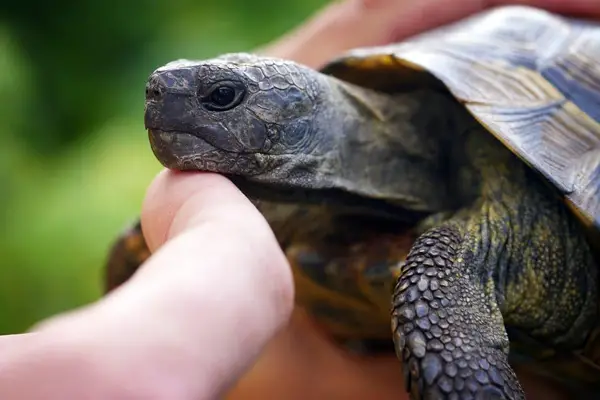
Lack of UVB lighting causes your pet to fall ill to MDB and have their lifespan drastically reduced as they can’t thrive properly. X-rays are usually used to determine if your turtle is suffering from MDB.
Simply getting a light bulb that produces the UVB light wavelength is all you need to introduce to your turtle’s life to keep this disease away.
Ear abscess
This is an ear canal infection, where a build-up of puss-like discharge forms and skin heals over it, creating an abscess. The abbess takes the shape of an overgrowth pimple protruding from the animal’s ear canal.
The ear abscess in turtles can become severe if not treated on time and fails to heal over time. You should not attempt to handle it on your own. It MUST be lanced and drained by a veterinary professional. This is because the ear canal is quite delicate and must be handled with a lot of care.
In most cases, the vet will administer a round of antibiotics and recommend dry docking for days as care for a turtle suffering from this illness.
Note that this ear infection is usually caused by poor water quality or improper brumation. Therefore, you can prevent it by making frequent water changes in your turtle tank and doing heavy filtration.
Shell rot
Shell rot is also a common disease among turtles and is usually caused by poor water quality. Bacteria tend to eat away at the shell, exposing the underlying bone. Sometimes they can go past the bone. If shell rot goes untreated, your turtle will die sooner or later.
Shell rot in turtles usually involves discolored shell areas that feel soft and have a rancid smell. While small shell rot spots may not be deadly to your turtle, they may spread over time and turn into lesions and negatively impact your pet’s health.
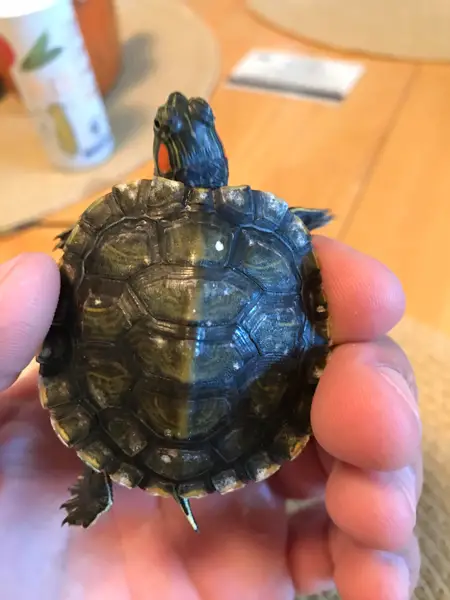
Treating this disease is simple if caught early. This is the simple procedure to follow:
- Dig out the rot using a sterile tool
- Apply the silvadene cream,
- Dry dock the animal for 24 hours or longer.
- Reapply the cream as it’s necessary and continue dry docking it until the entire rot clears up.
Advanced shell rot may however be hard and tedious to treat, and may even require surgery. Antibiotic injections can be used to treat secondary infections resulting from shell rot.
Luckily, you can prevent shell rot by keeping your turtle in an enclosure with clean water plus heavy filtration.
Sticking to a good aquarium cleaning schedule and fishing out any excess foods after meal time is also helpful preventive measures.
How to prevent illnesses in turtles?
Practicing proper care and putting various preventative measures in place can help prevent illness from catching up with your turtle and causing death.

Below are helpful tips that keep your turtle in good health and prevent premature death:
- Ensure your turtle’s basking area and water are always at optimum temperature. This is important, keeping in mind that prolonged exposure of your pet to cold water could lead to respiratory illness.
- Maintain the recommended water parameters for turtles; control the levels of ammonia, nitrite, and nitrate in their tanks or aquarium.
- If you use tap water for your pet tank, always de-chlorinate it first.
- Maintain regular tank cleaning intervals to ensure your pet lives in a clean environment at all times.
- Check that the filters, heaters, and UV lamps are in good working conditions at all times.
- Practice controlled feeding for your pet to prevent it from becoming obese or underweight. Monitoring your pet’s weight in intervals is key to preventing these unhealthy conditions.
- Finally, make sure you understand your specific turtle species and strive to meet all its special requirements.
PRO TIP: Get your turtle regularly examined by an exotic animal veterinarian. This is especially important if you notice changes in its behavior or appetite. The vet will diagnose and treat various turtle ailments using the correct procedures and medications—helping save your beloved pet’s life on time!
How do you tell between dying and brumation?
You can tell brumation from dying in a turtle by putting it in lukewarm water. If the turtle is brumating, this warm water will help trigger its sensory receptors. And in so doing leads to actions such as defecating, urination, or twitching of the legs.
If your turtle doesn’t display these body functions when you put it in warm water, then it is probably dead. Consulting a vet is the surest way to confirm if the turtle is indeed hibernating and not dying.
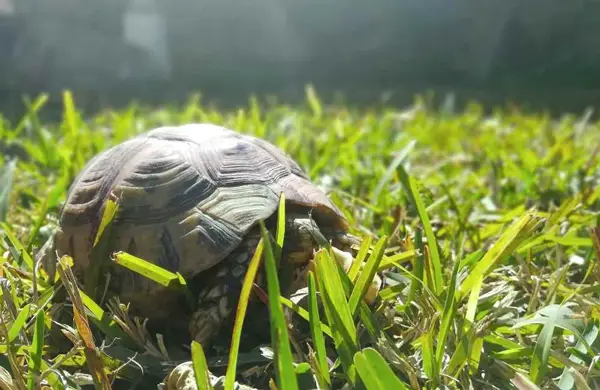
If you’re a new pet owner, you may easily confuse brumation (hibernating) with death in these animals. This is because a bromating turtle has its normal metabolism significantly slow down to enable them to sleep through the cold winter months.
During this period, they act lethargic and naturally stop eating, making it appear to you that they’re dead.
How to comfort a dying turtle?
A good way to comfort your dying turtle is by increasing their surrounding temperature and keeping them warm. You can achieve this by increasing their tank/aquarium water temperatures to around 85 degrees F or putting them in a dry habitat, say a plastic bin, with a towel and heat lamp that keeps them warm.
The reasoning behind this is to trigger an immune response from the animal’s internal system to help fight off the underlying illness and even bide time for your beloved pet.
Still at it, you can help your dying turtle by figuring out what is ailing them. If you can’t seem to make out anything out of the symptoms the turtle is exhibiting, consider taking it to an exotic reptile vet specialist for professional help (normal vets may not be of much help when it comes to handling turtles and tortoises).

Figuring out what’s ailing your poet before you even go to a vet is even better as you’re able to prevent such a scenario in the future. Plus, it helps give you an idea of what time you need to help them and what measures or remedies you can do before you visit the vet.
What to do with a dead turtle?
When your pet turtle dies, we recommend burying it as a way of returning the nutrients the animal has back to the earth through natural decomposition.
You may even consider planning a small plant or tree on top of your turtle’s grave as a way to remember your beloved pet.
If you come by a dead female turtle by the roadside, you may also want to pause and examine it. There could be a chance that it was looking for a spot to lay her eggs. Thus, you can open her body cavity and collect the eggs and incubate them to bring new hatchlings to life!
If you wish, you can also keep a turtle’s shell after your pet dies. In this case, you need to follow the correct process to preserve its shell so the scutes don’t fall with time and leave you with the turtle bone.
Many natural ways of preserving the shell exist. But keep in mind that the shell may not preserve its original color for long.
Take a look at this video showing the process of preserving your beloved turtle’s shell
FAQs
Yes, turtles float when they die. As the turtle’s bodies decompose after death, gases form in their body which then increase their buoyancy, making them float on water. However, this isn’t always a conclusive method of deciding if the turtle is dead. This is because an alive turtle can decide to float in the water. Also, a dead turtle may not have enough gases in its body to make it float.
You can tell if your turtle is dead if it remains completely still (or lifeless) for days and fails to respond to stimulation. Other signs for verifying if your turtle is dead include floating on water, failing to flip over when you put it on its back, and producing a bad odor.
Final Word
The last thing you want to imagine is losing your beloved pet, so knowing the signs of a dying turtle in advance is helpful for every turtle owner.
The most common signs that your turtle is dying include loss of appetite, too much basking, and coughing or sneezing. Rotting shell, lop-sided swimming, and poor odor around the shell are also signs that your little friend is dying.
Follow the tips we have shared in the above guide on how to take care of your dying pet and get them to your vet as soon as possible for treatment.
If you’ve tried everything but your pet turtle dies, you can simply burry her to return her nutrients to the earth for consumption by plants and continue the cycle of life.
